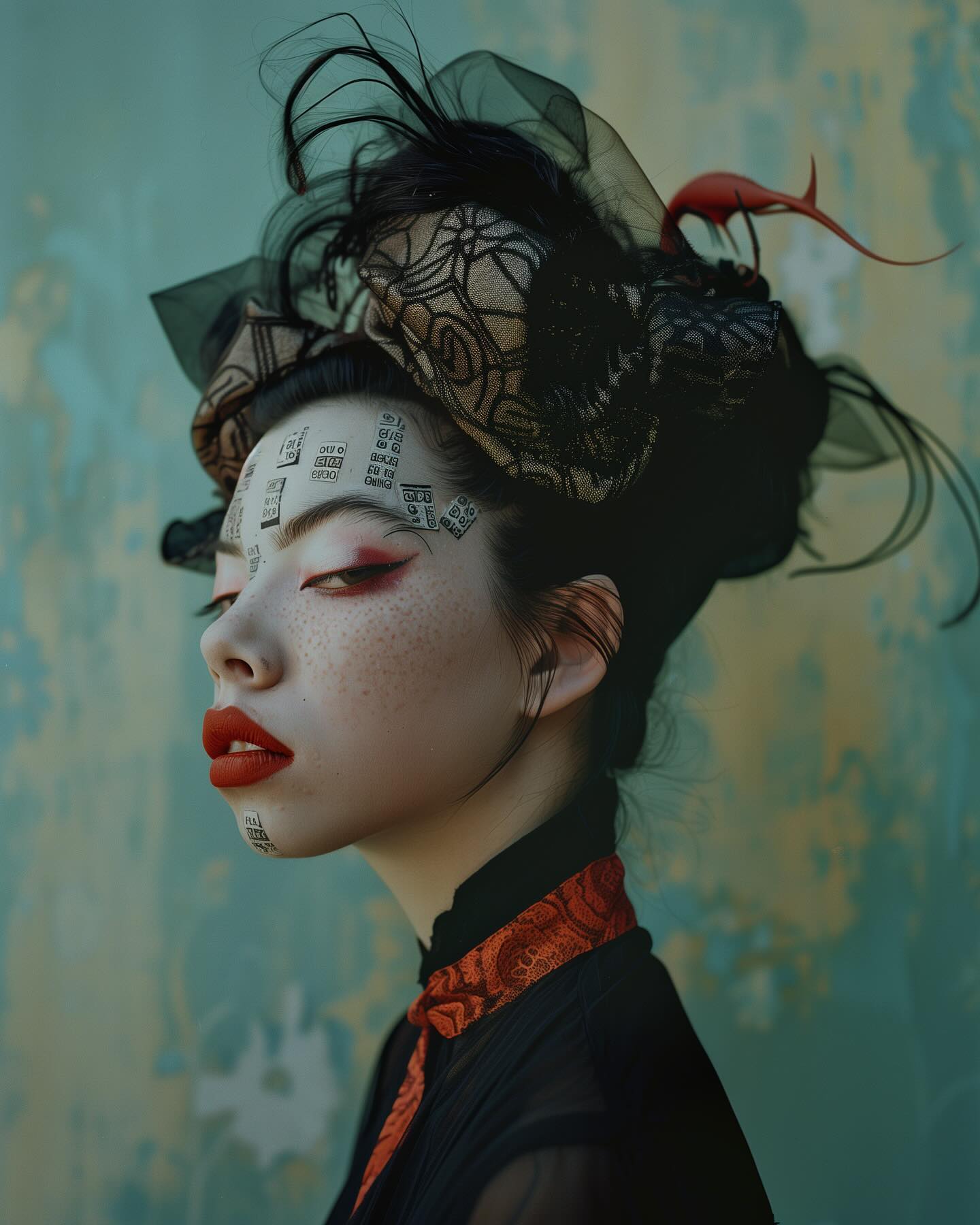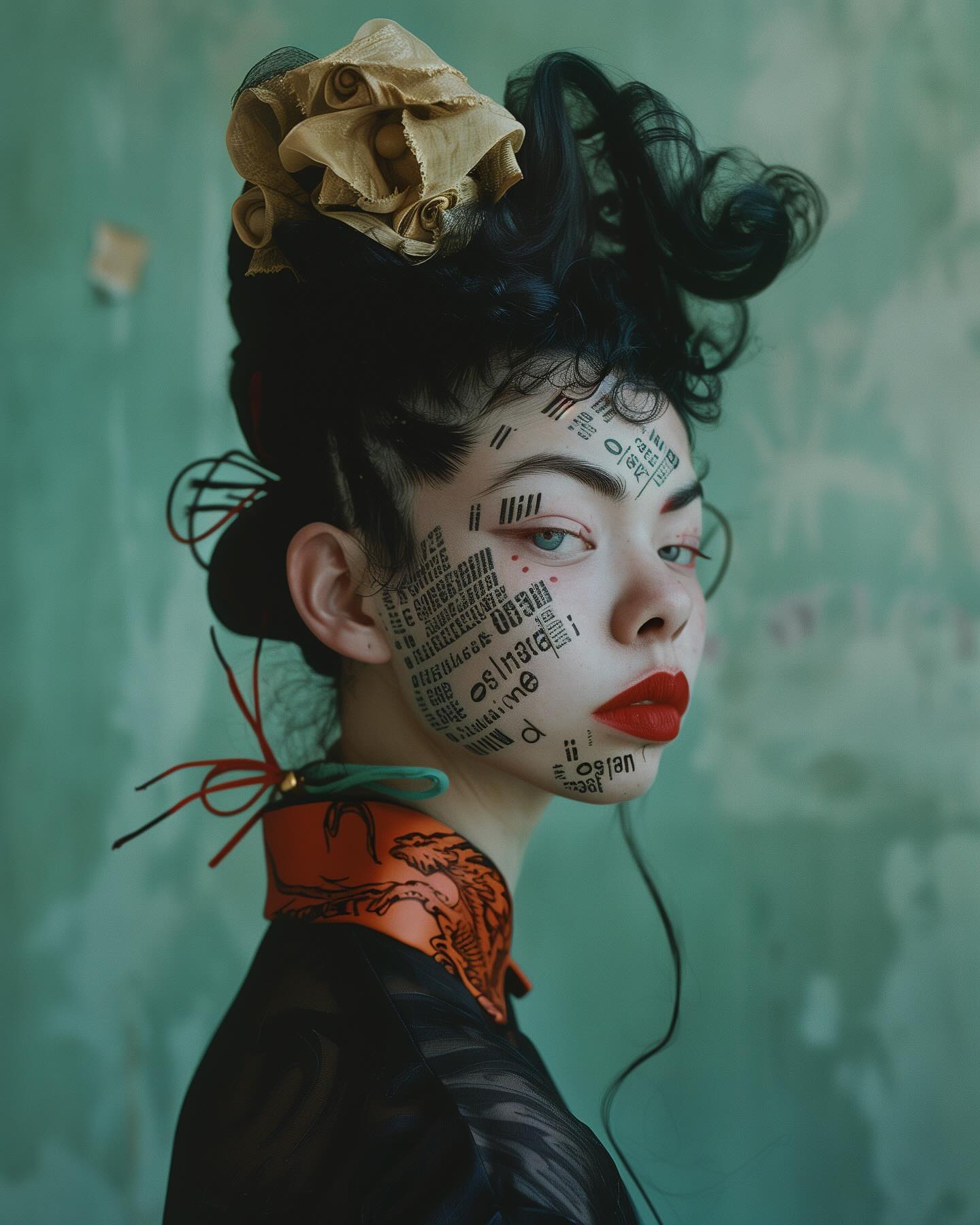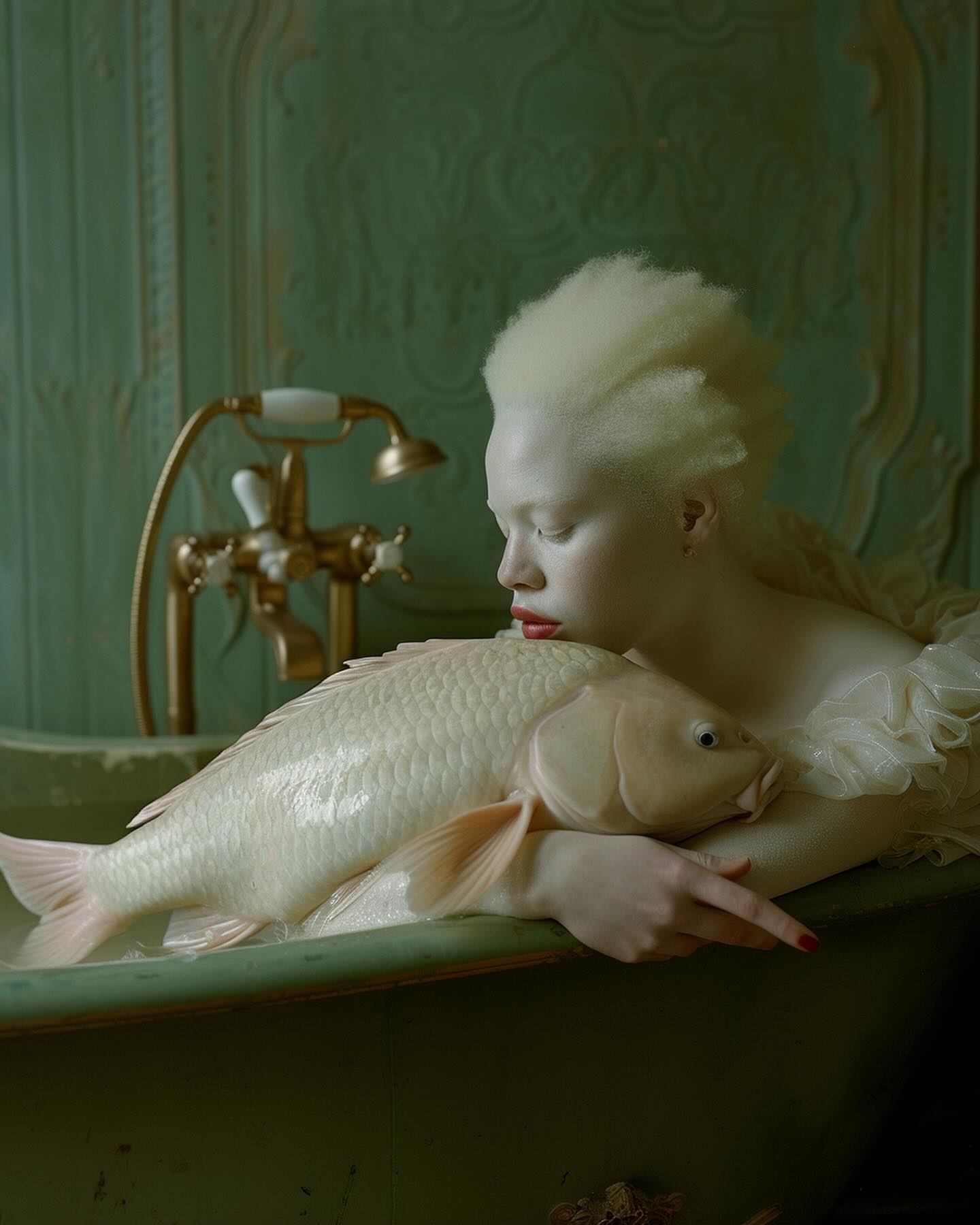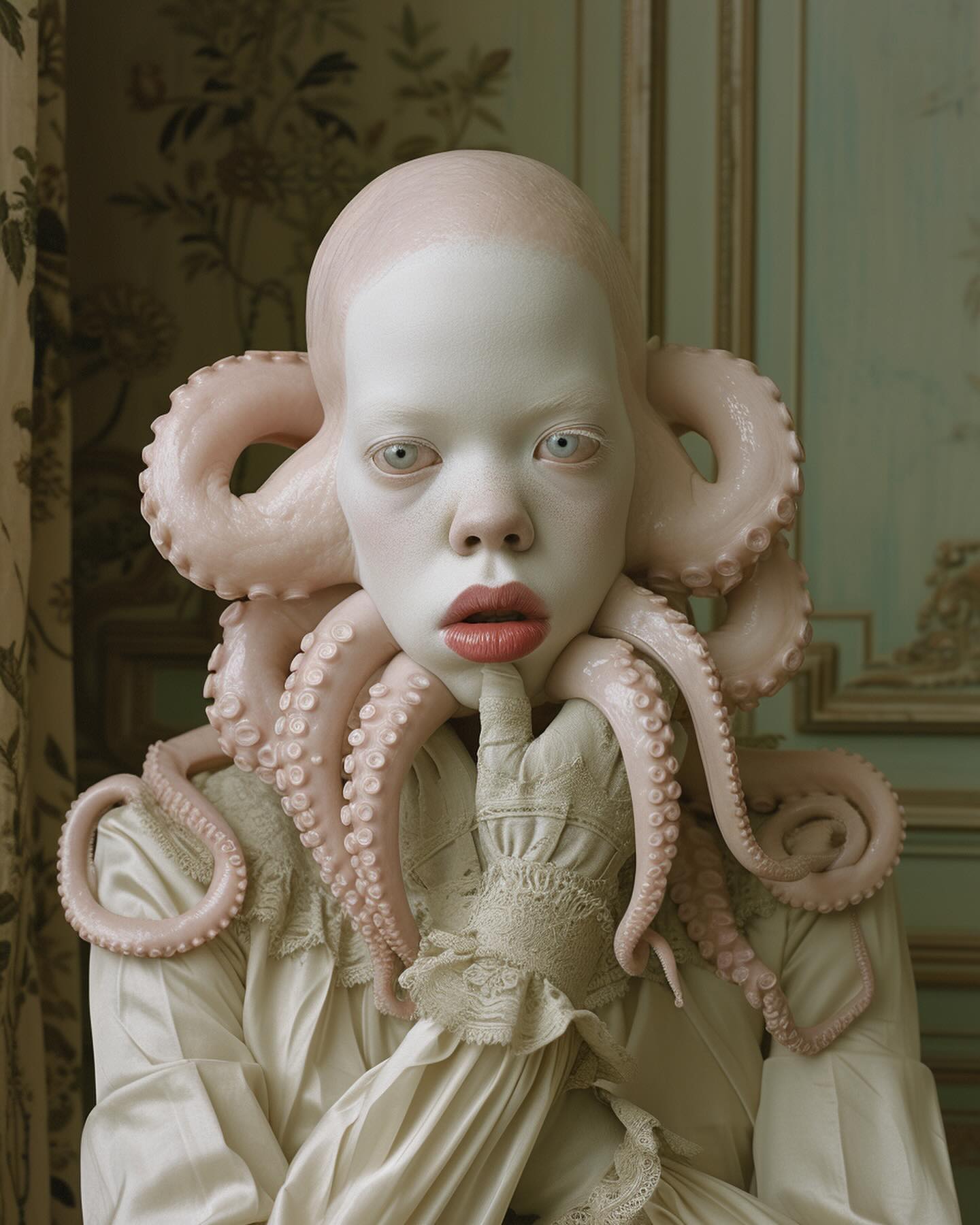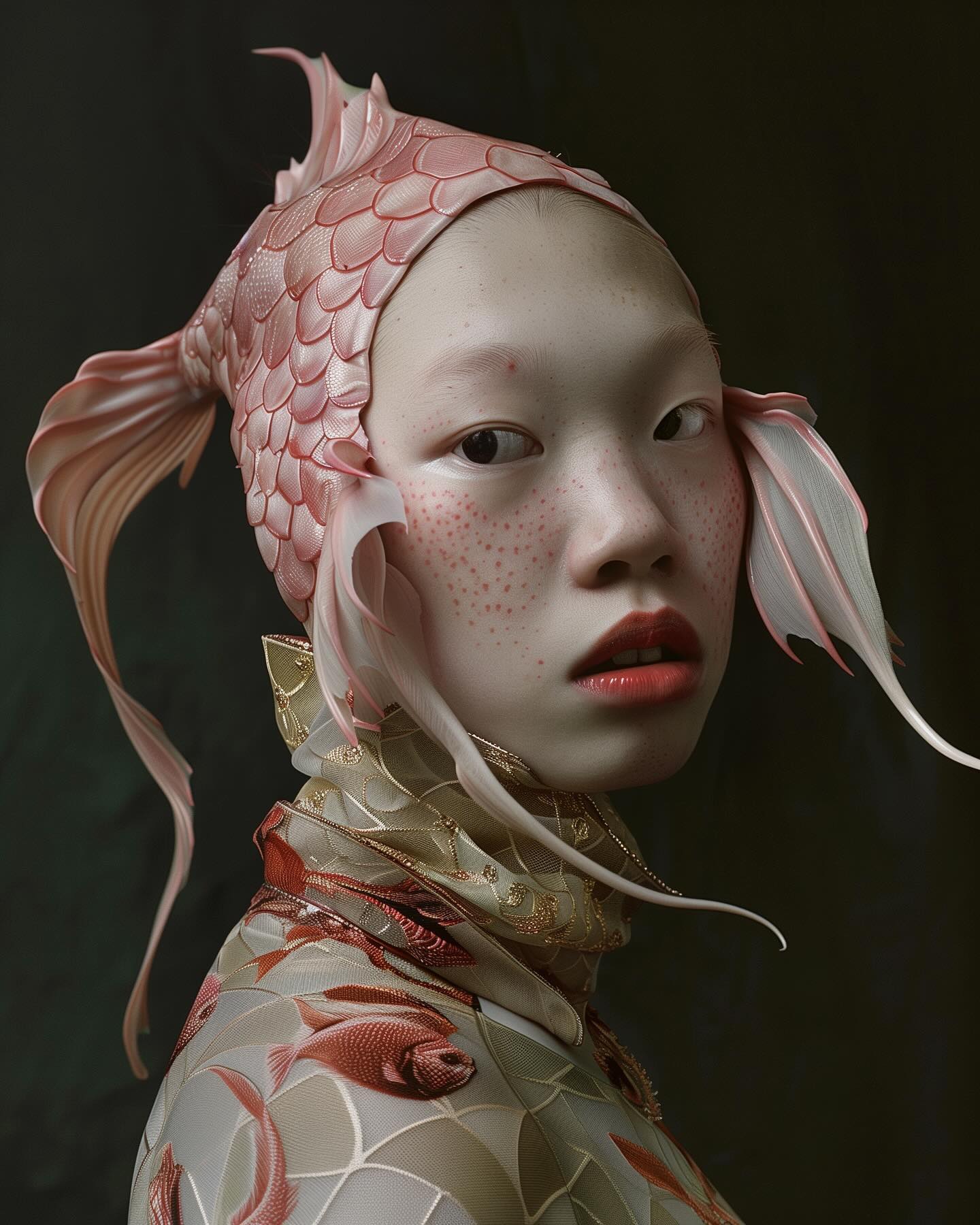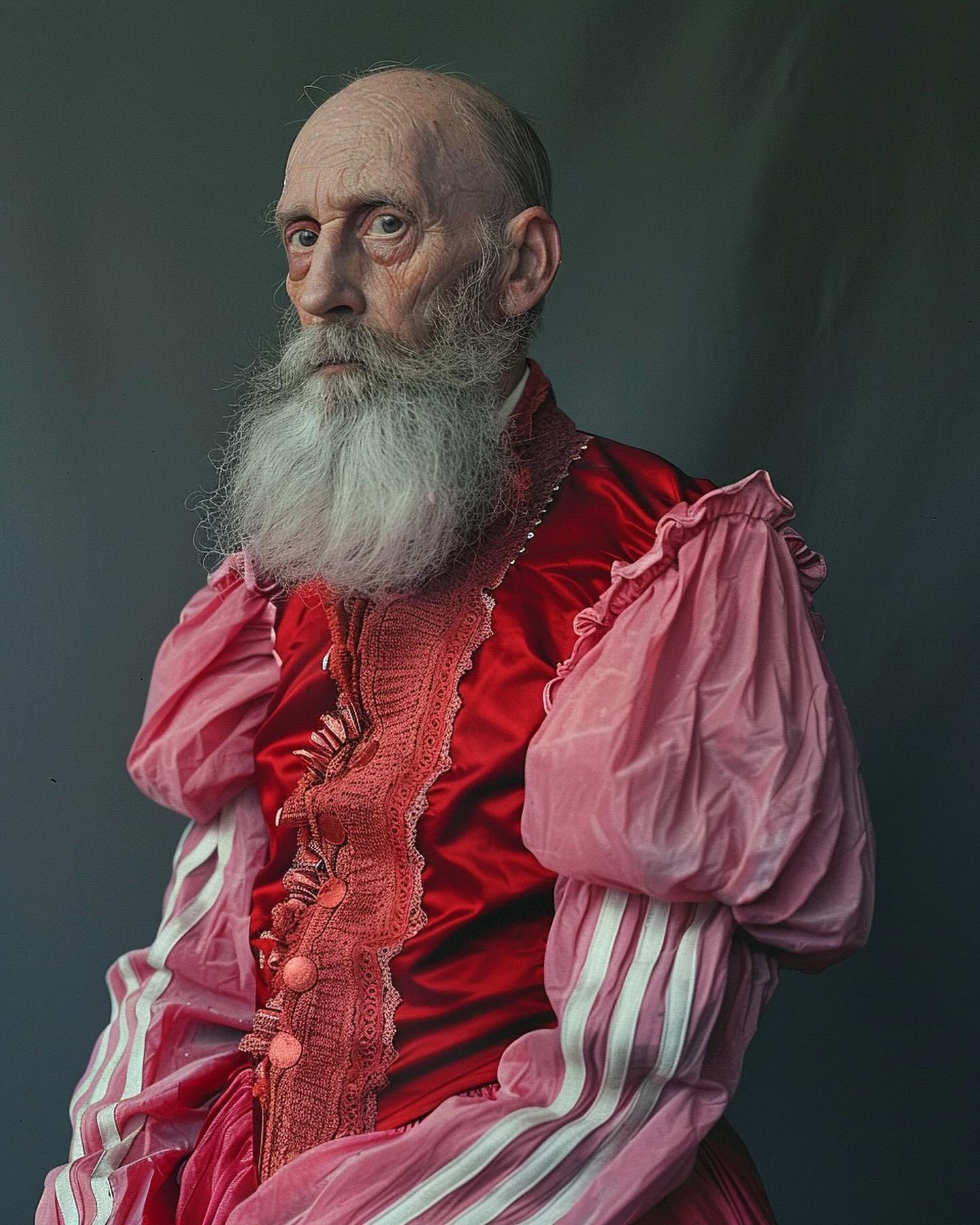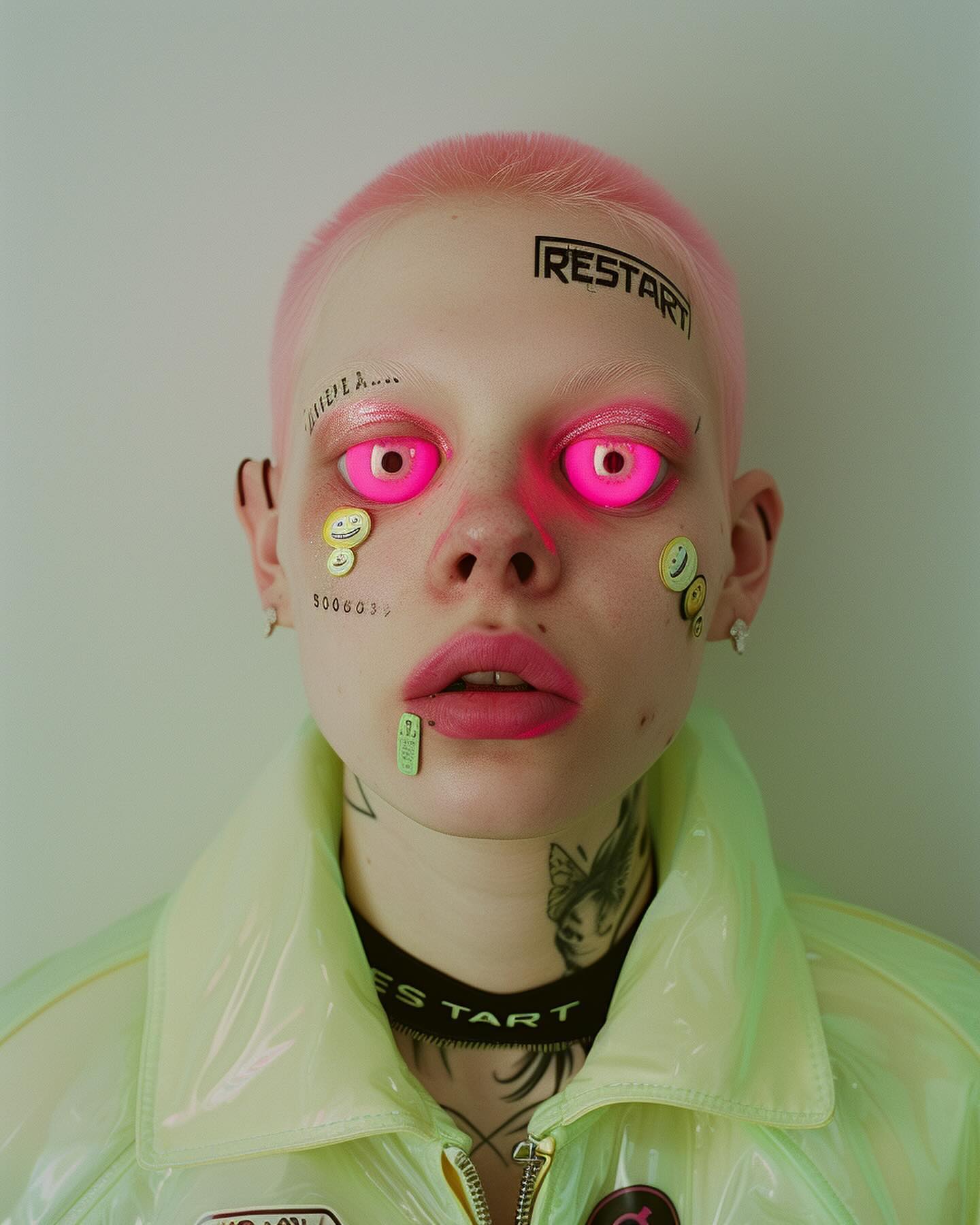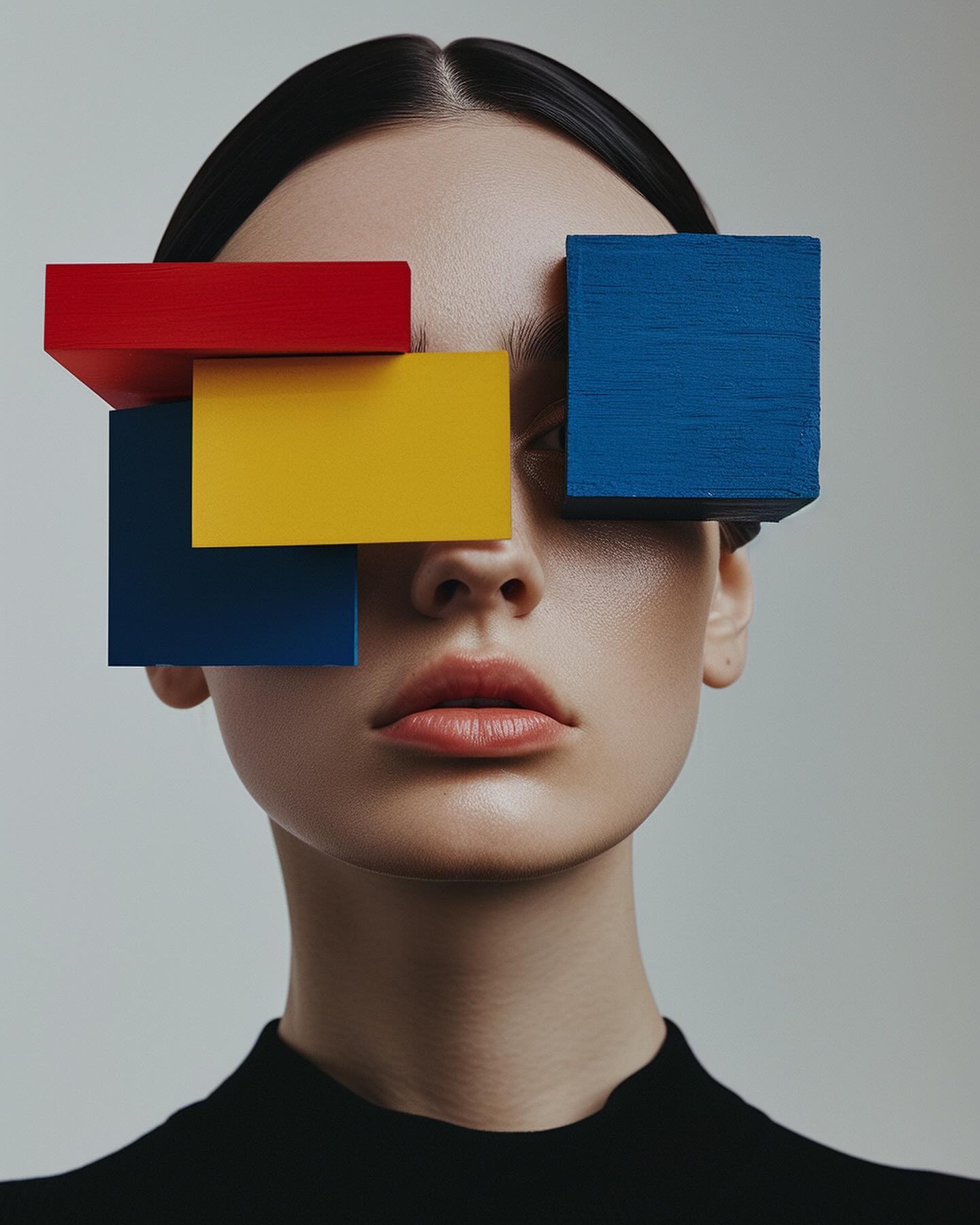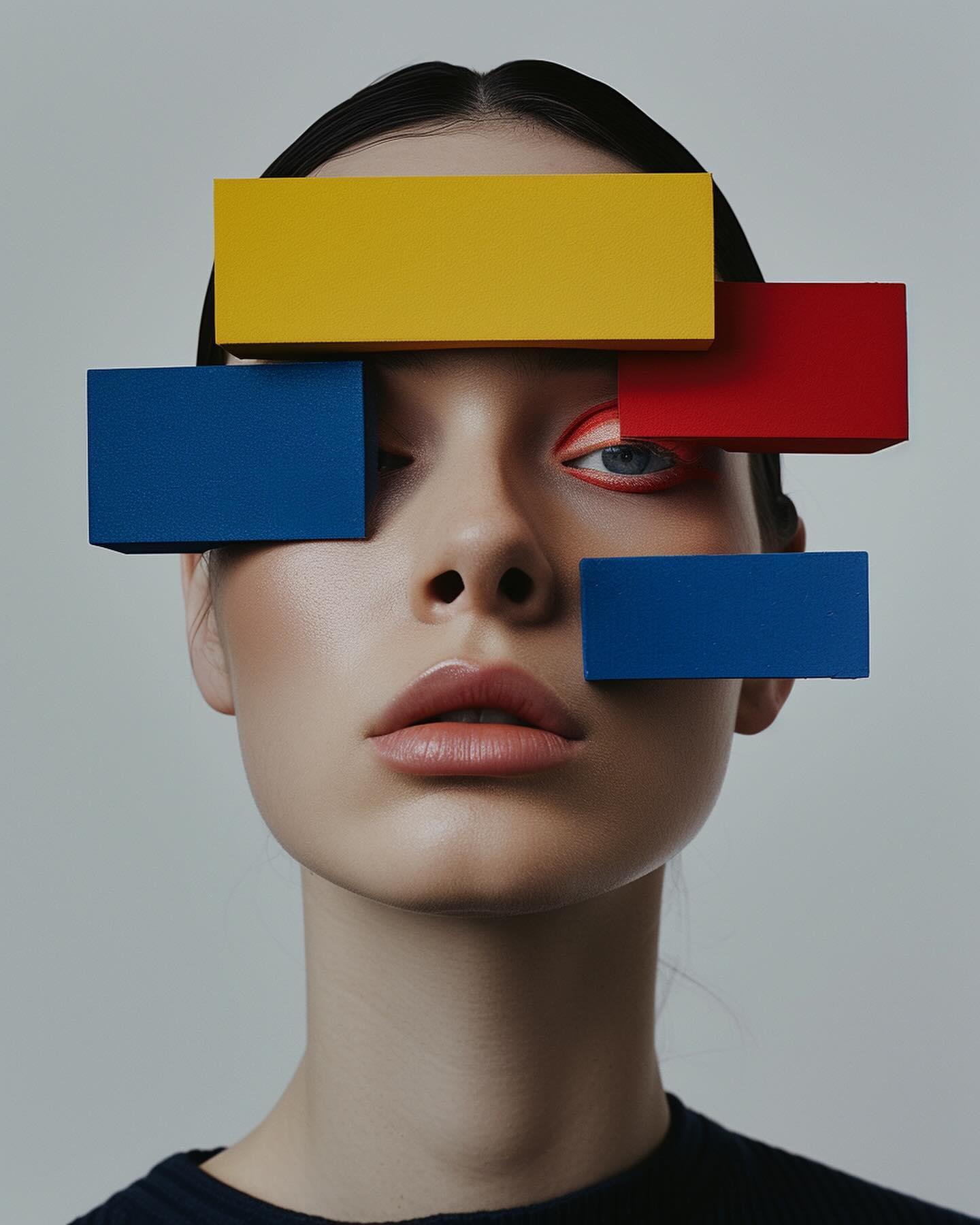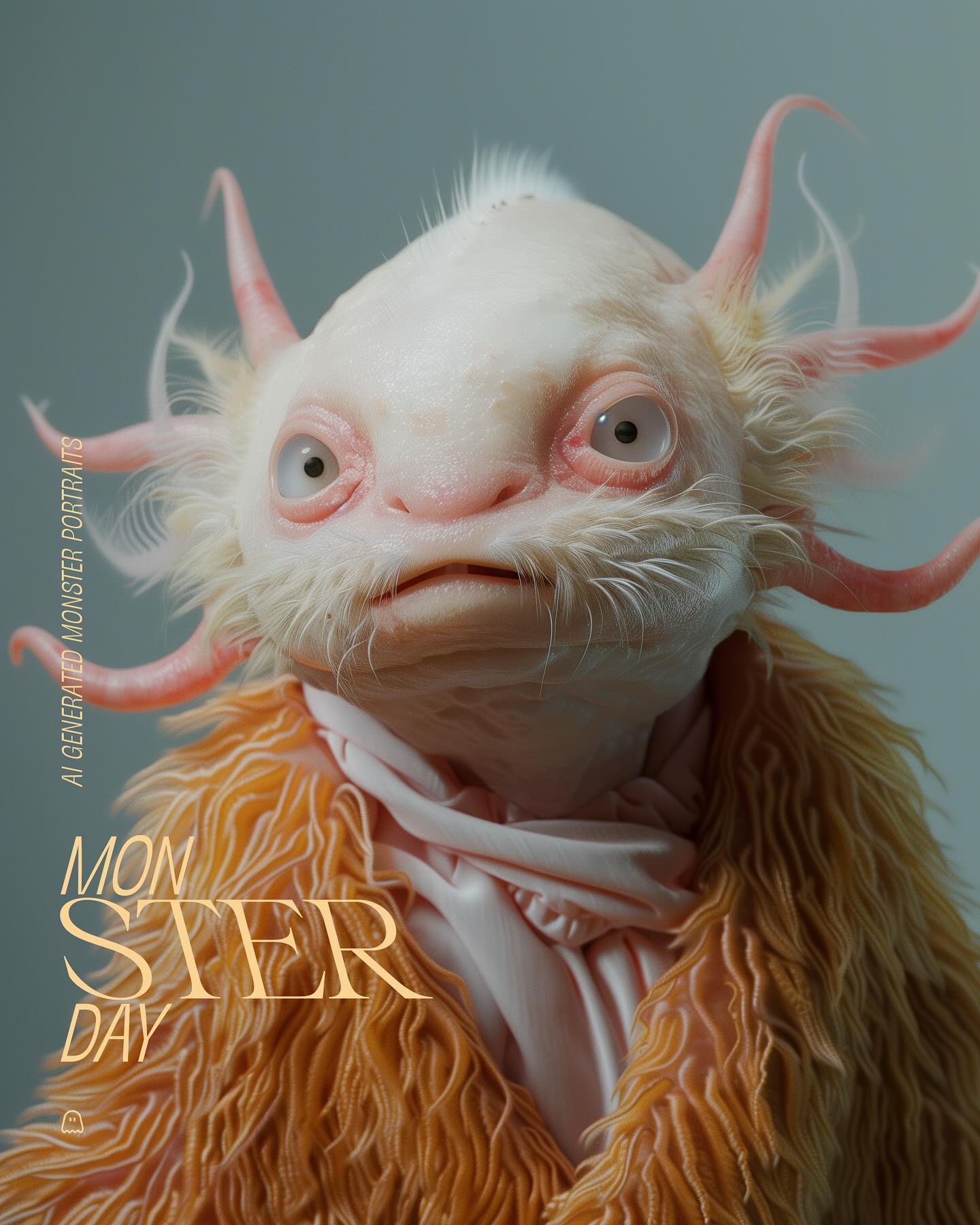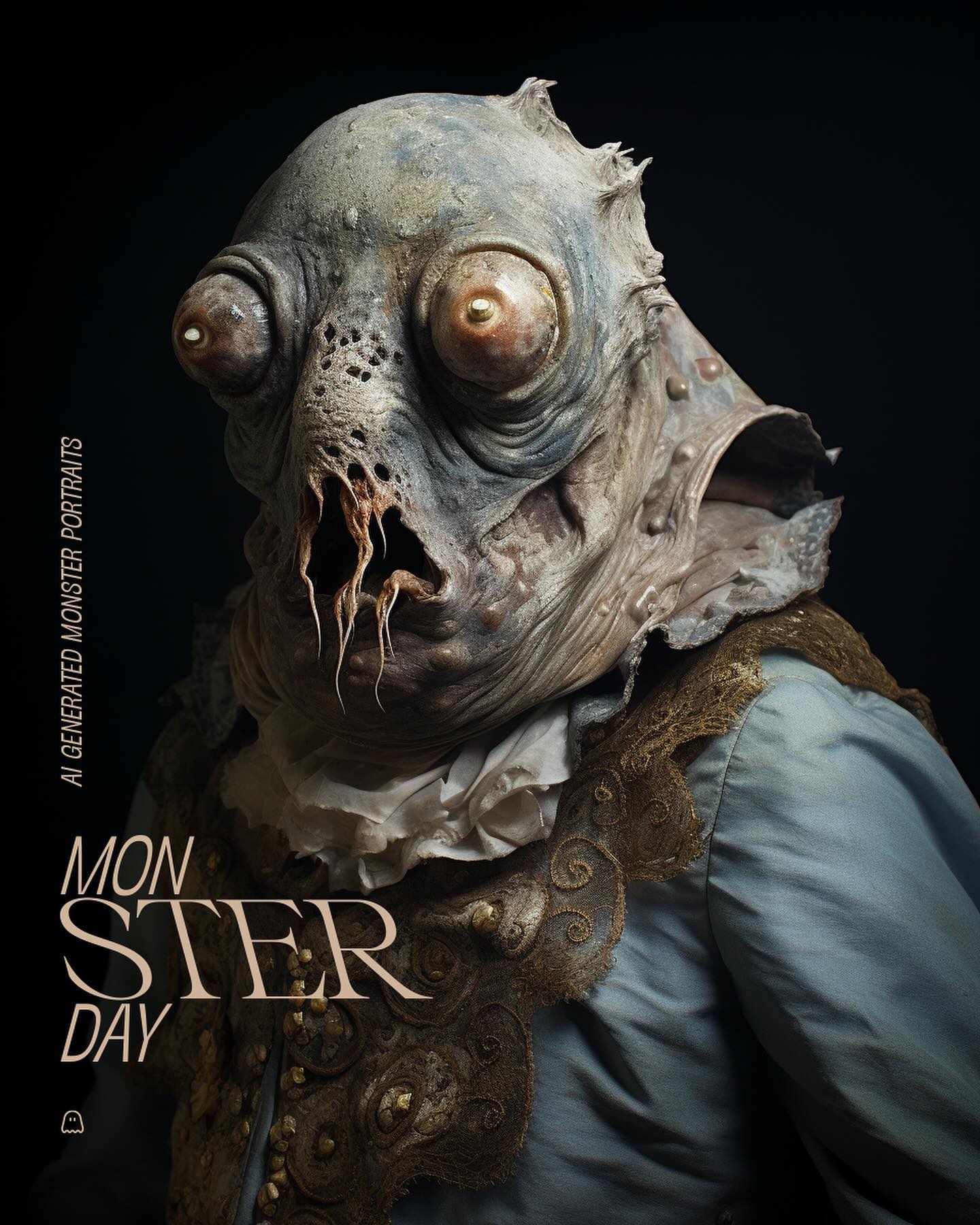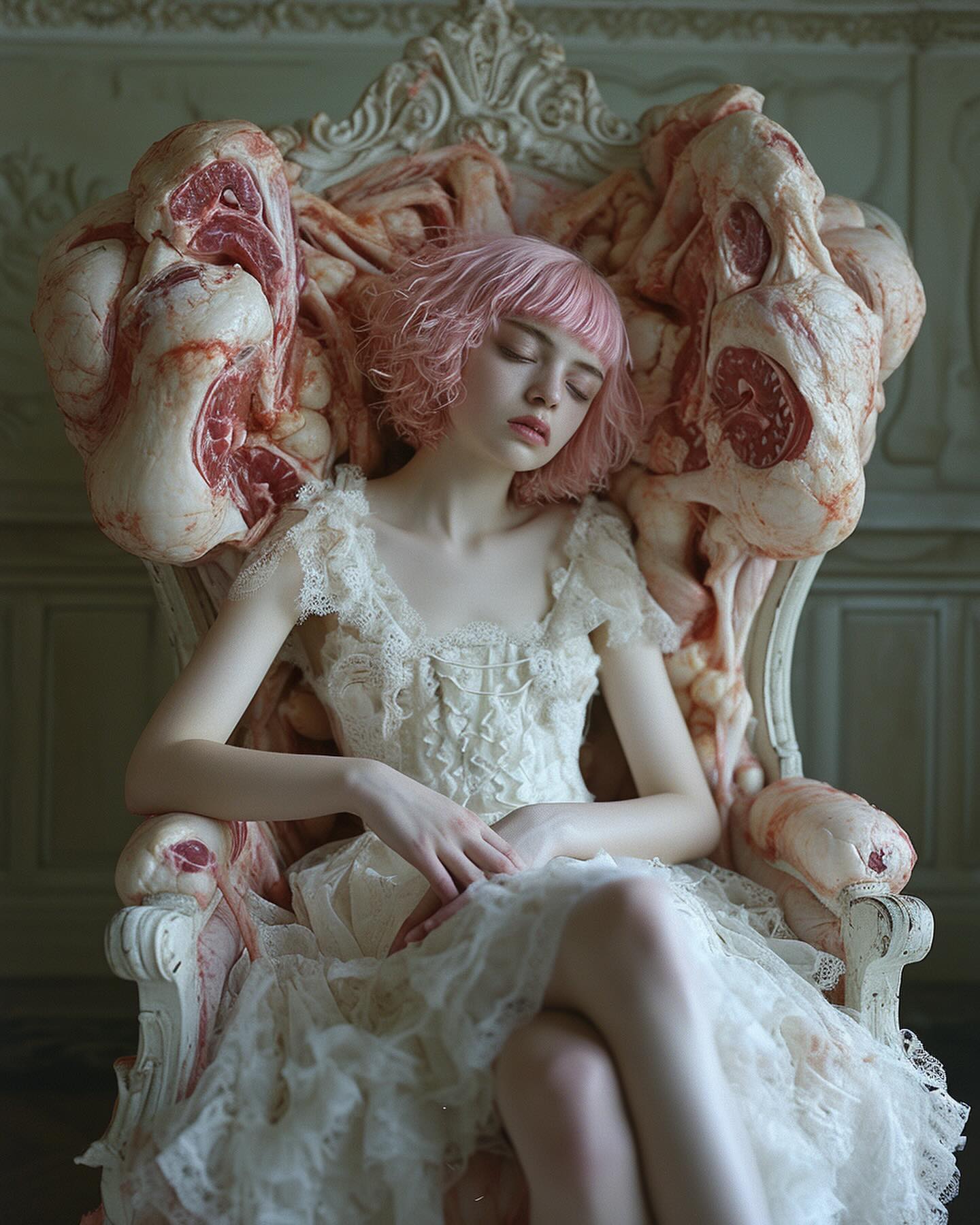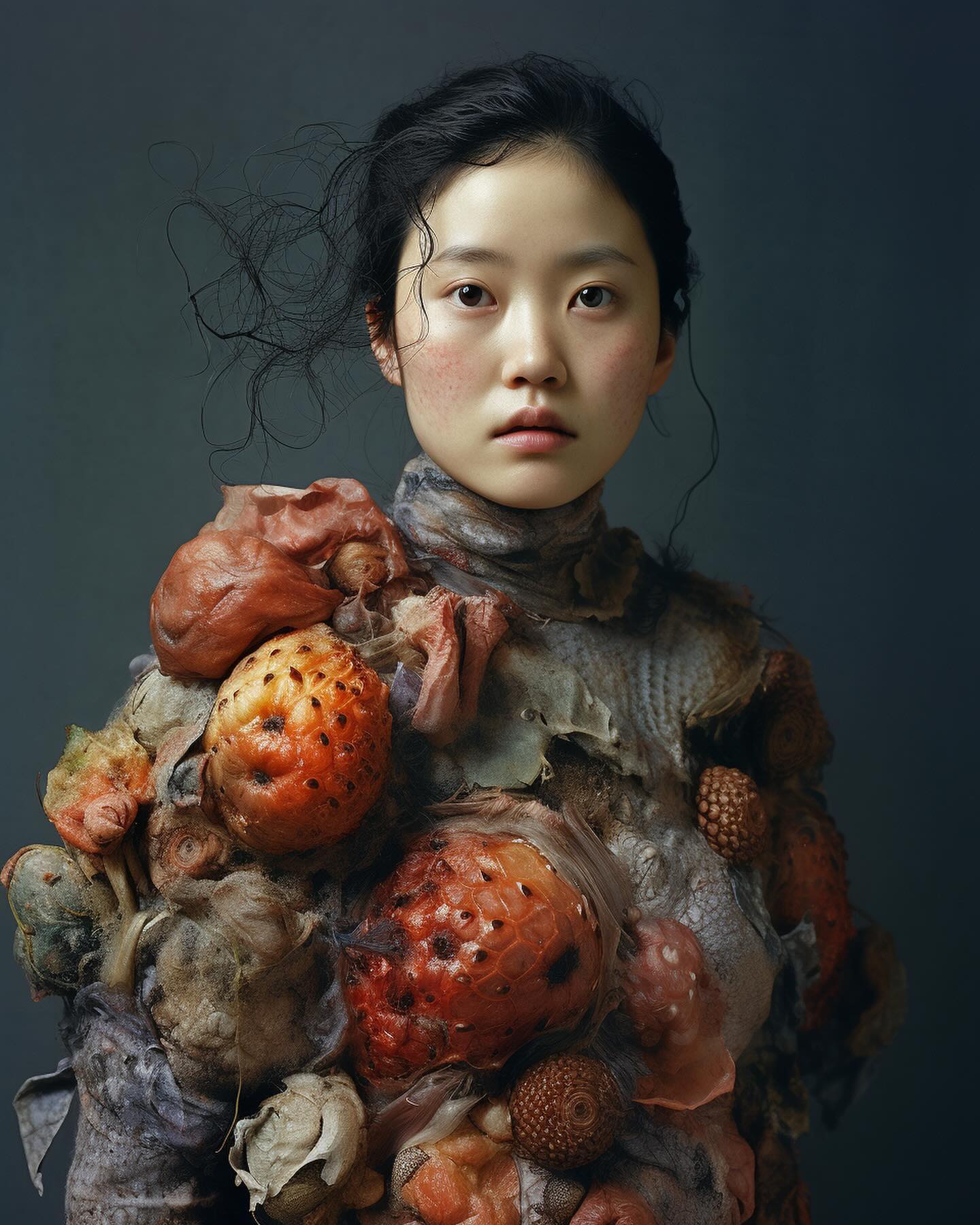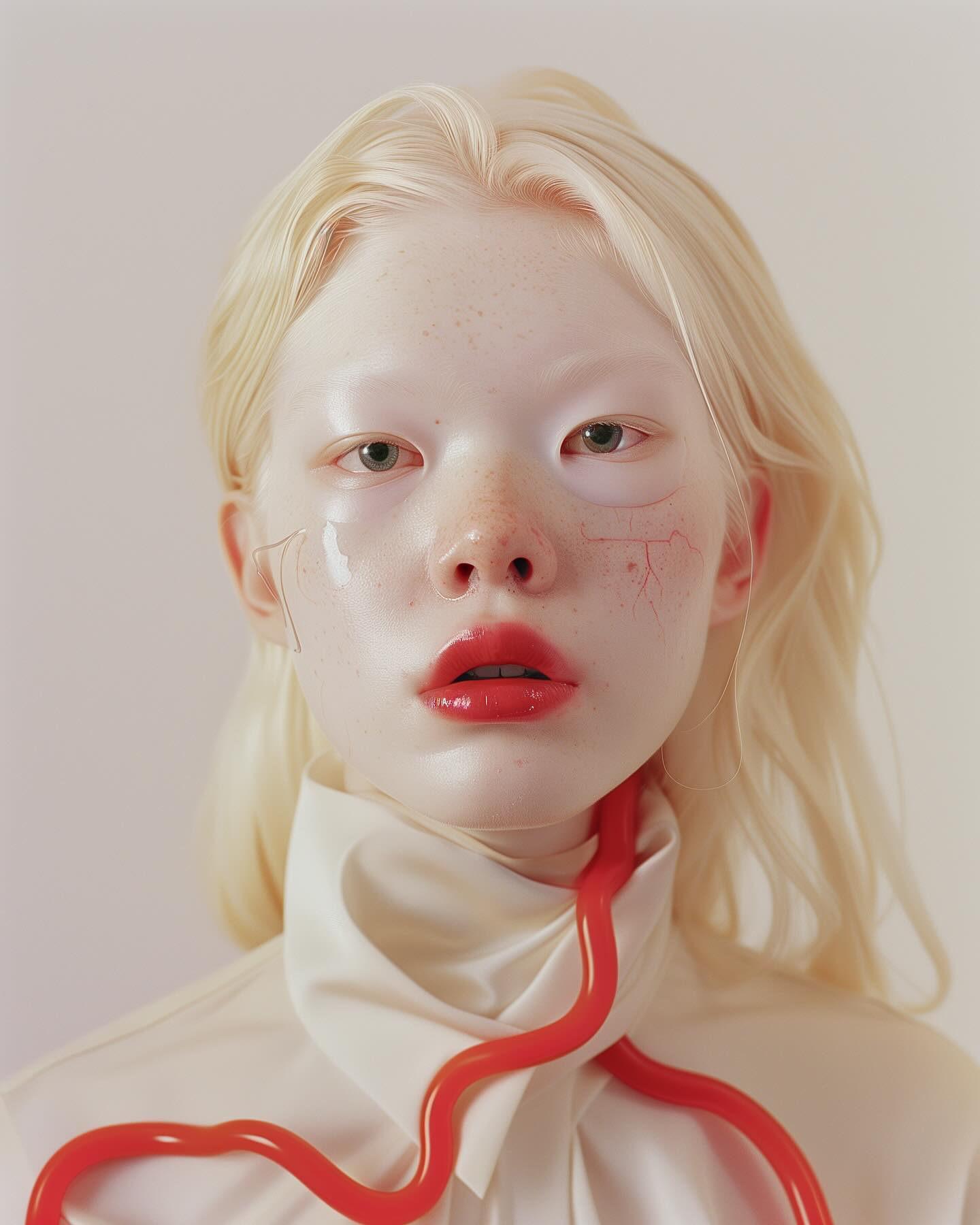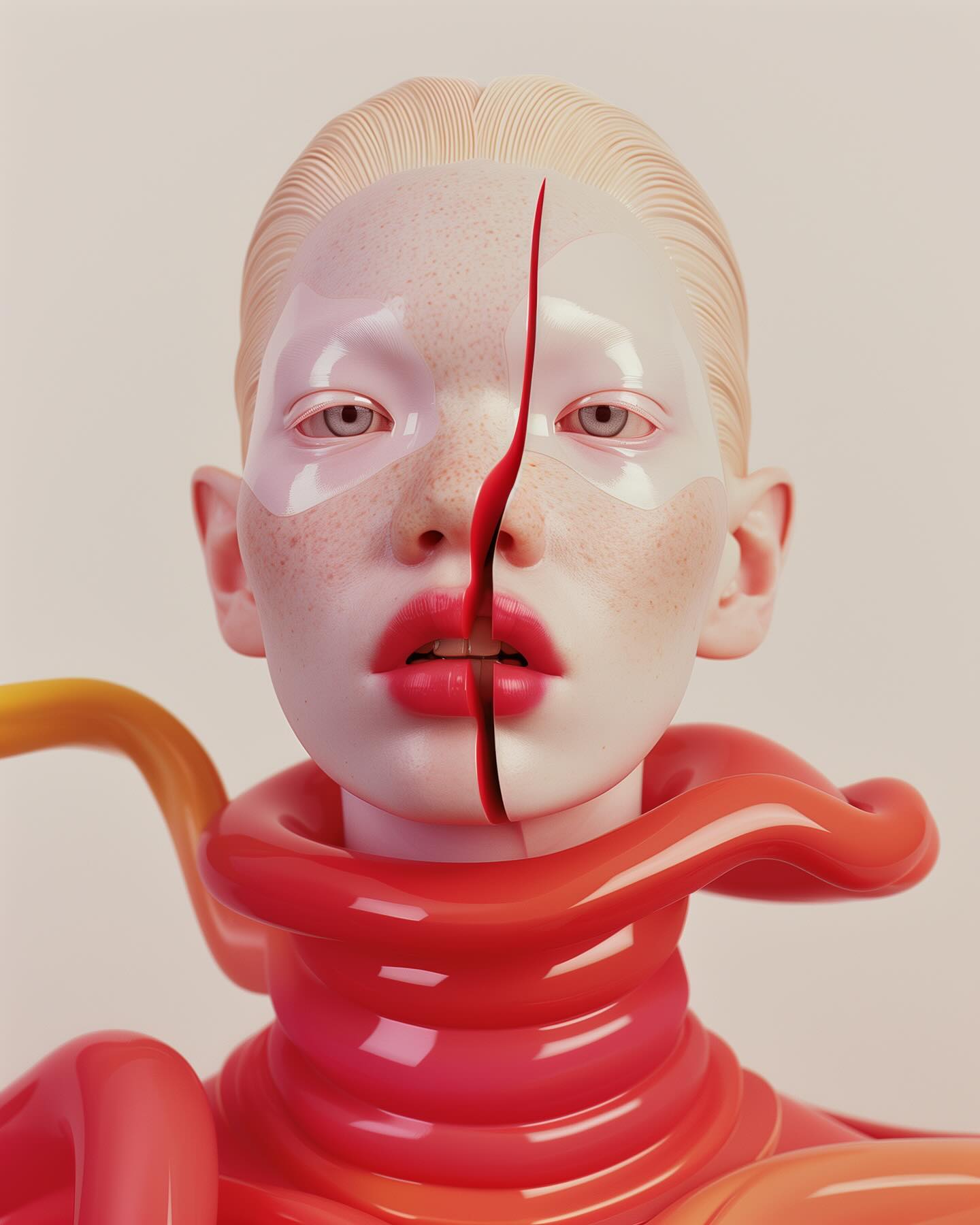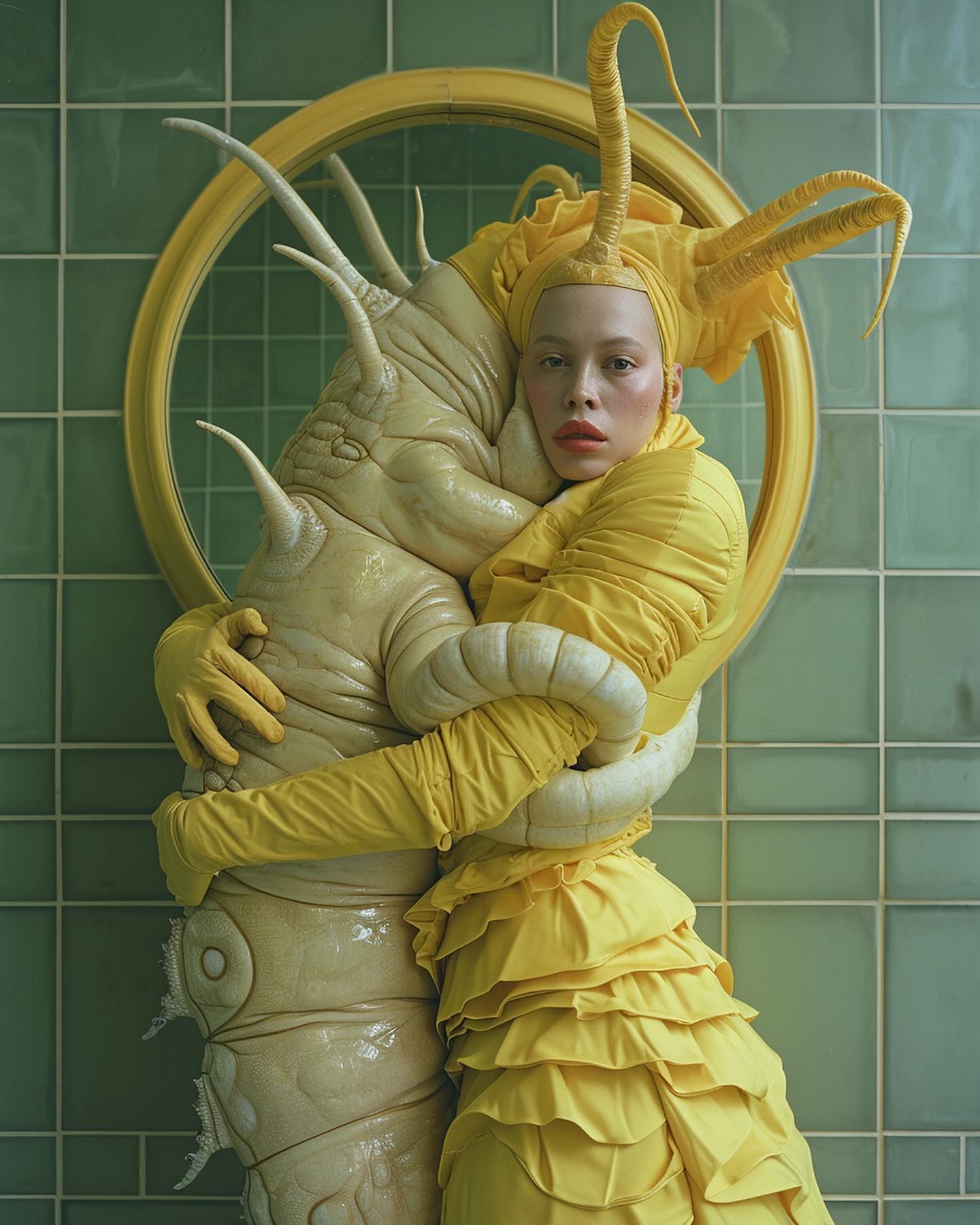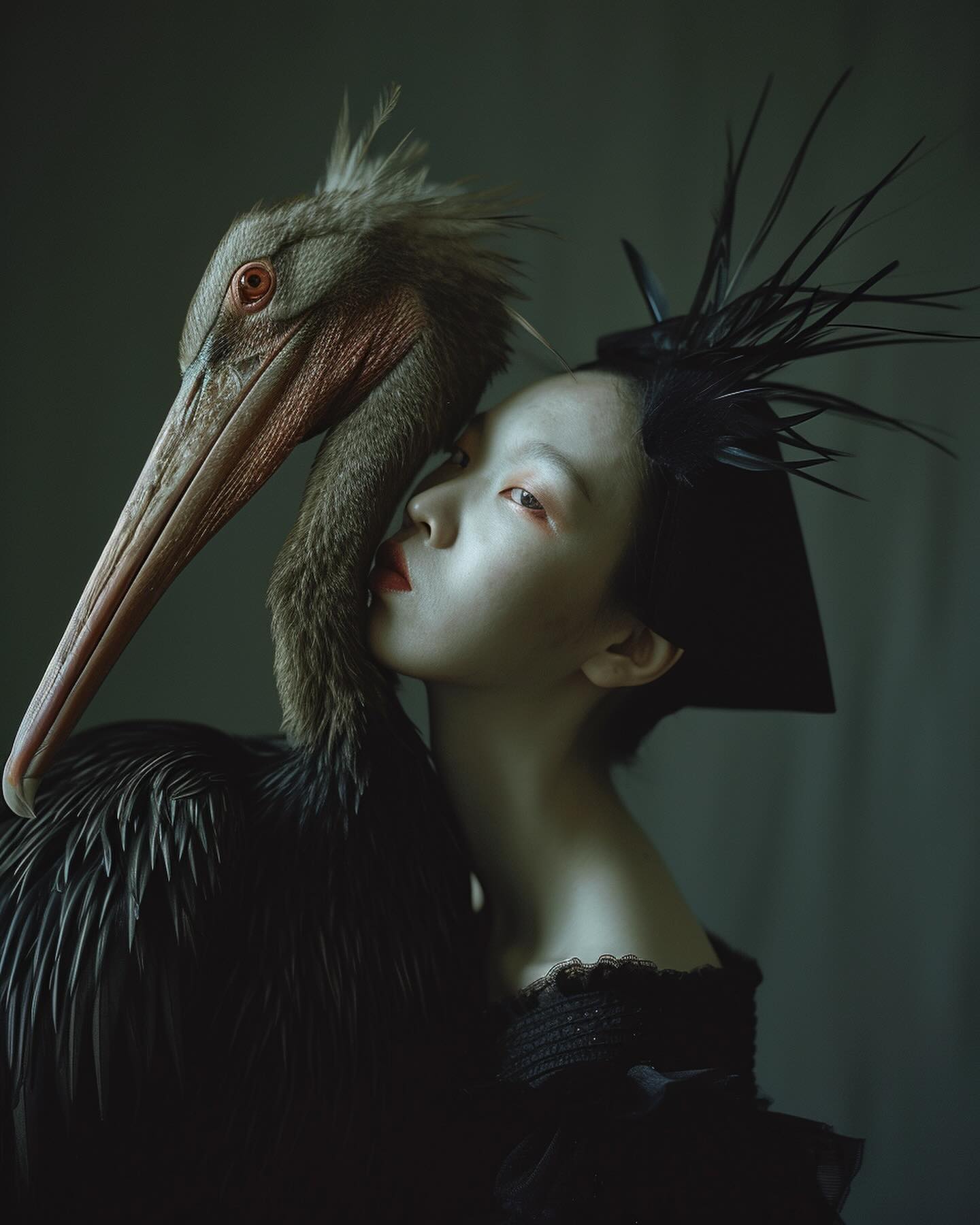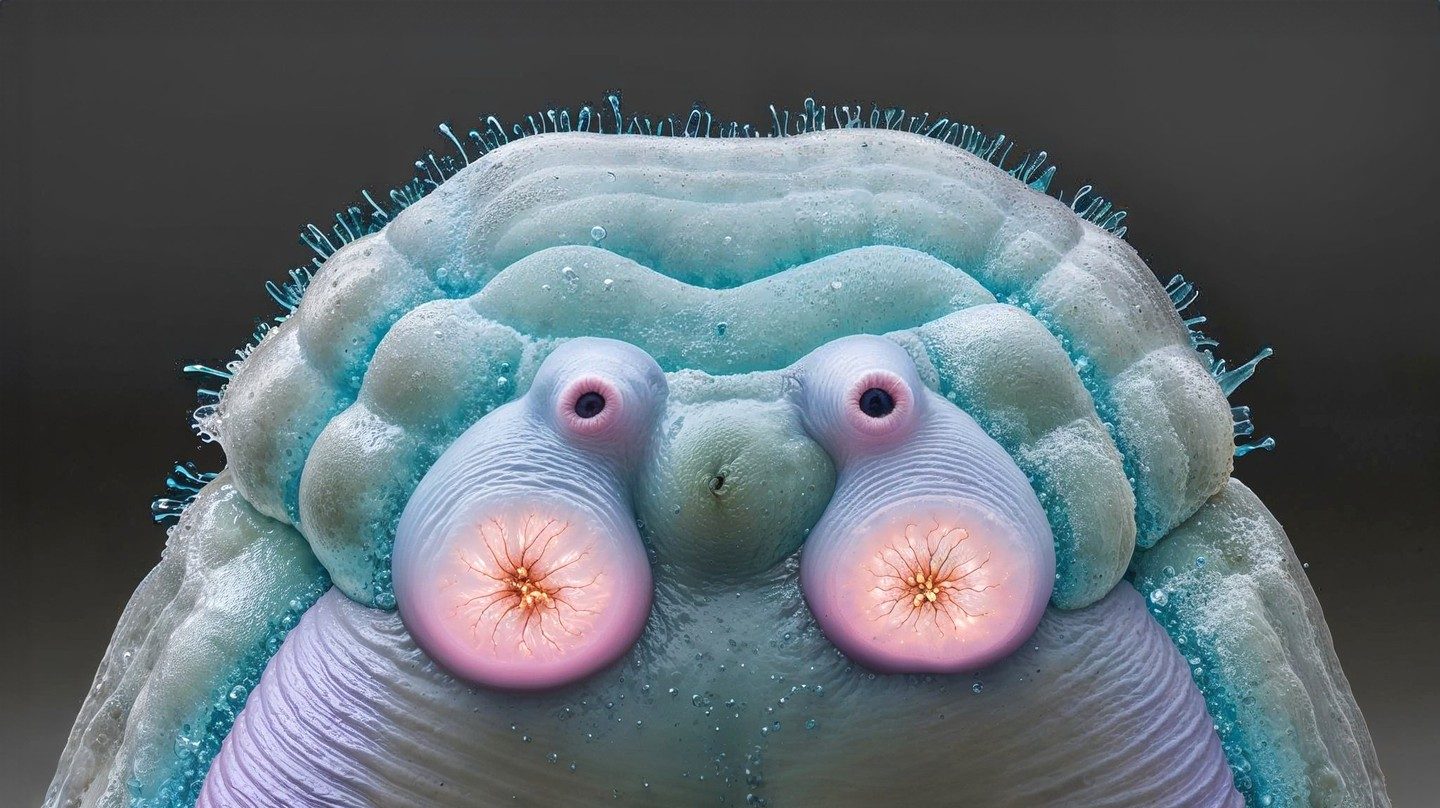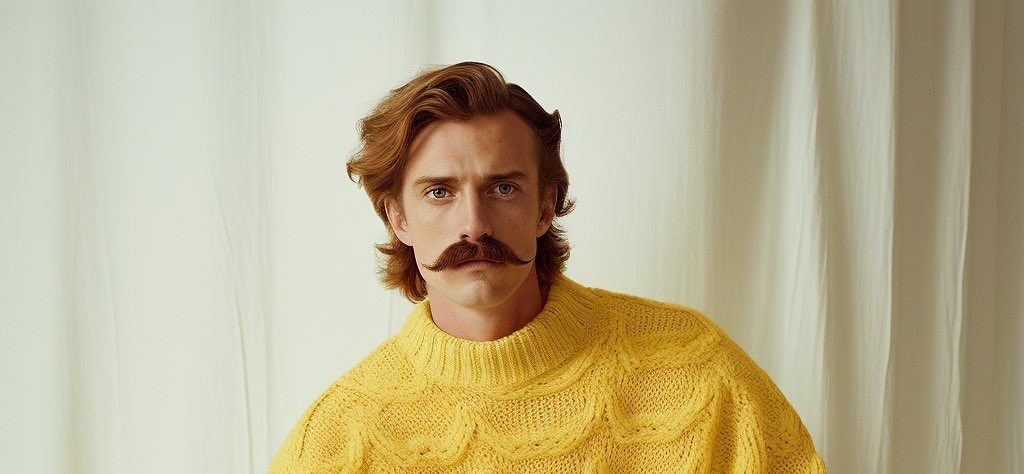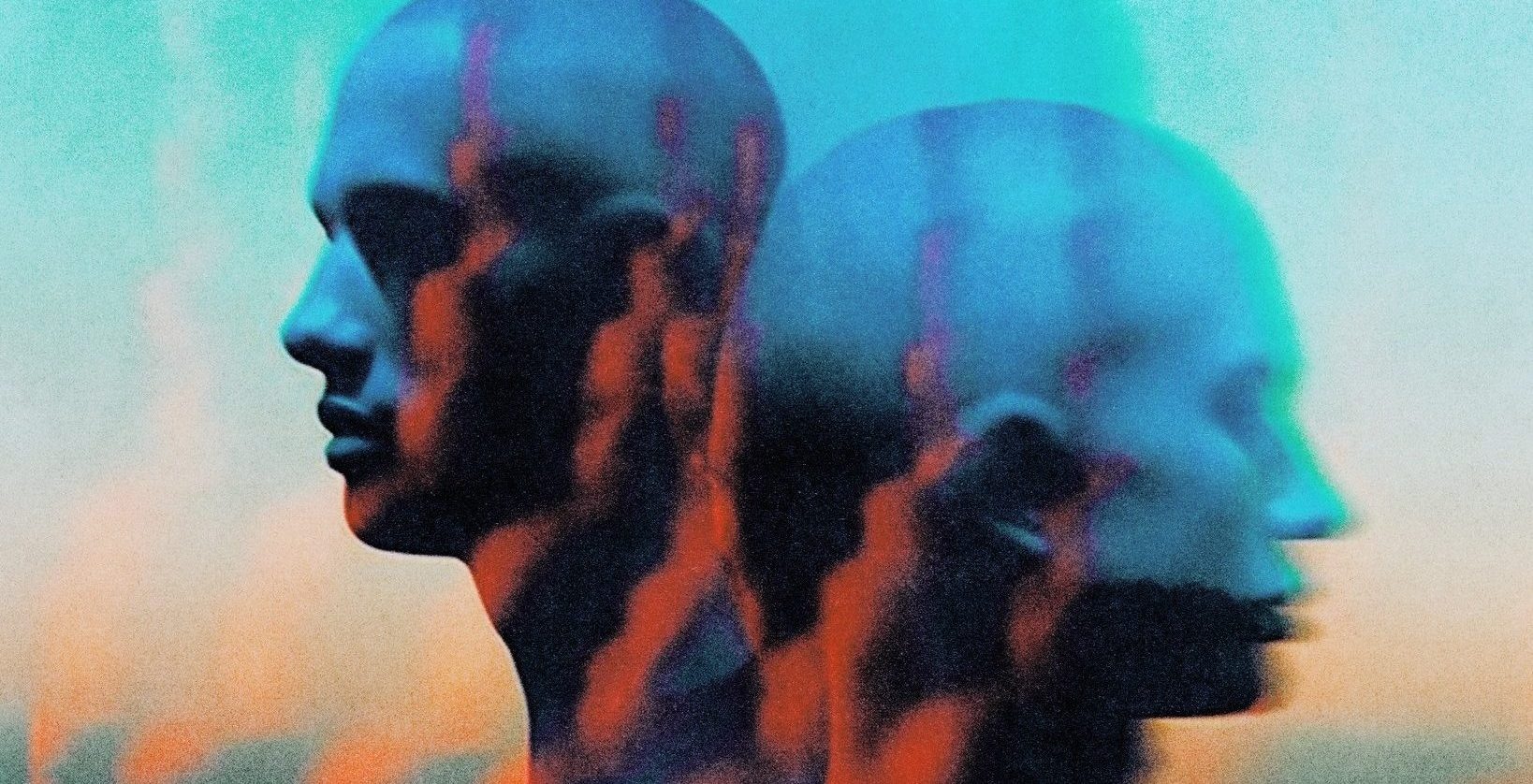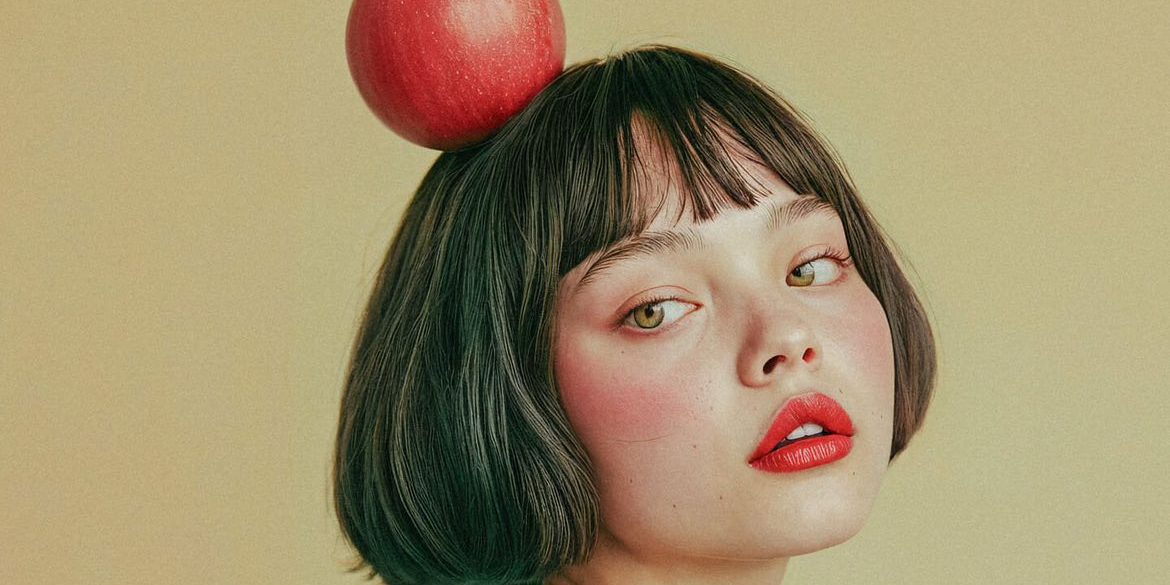Could you share a little bit of your creative background?
I’m from Portugal and I work as an art director at a communication agency in Portugal integrated into the Havas Group called Fullsix.
I’m interested in a wide spectrum of areas associated with design, from character design to graphic identity.
I used to dedicate a lot of my free time to my personal illustration, photocomposition and graphic design projects. But lately I’ve been spending more time exploring Midjourney and I’m fascinated by this tool’s powerful graphic delivery.
With the AI, I don’t see myself as an artist, I see myself more as an art director who shares a vision with the true artist that is Midjourney.
The opportunity that these tools give us to be able to visualize in seconds, productions that before AI would only be possible with multidisciplinary teams and with longer delivery times, is truly revolutionary.
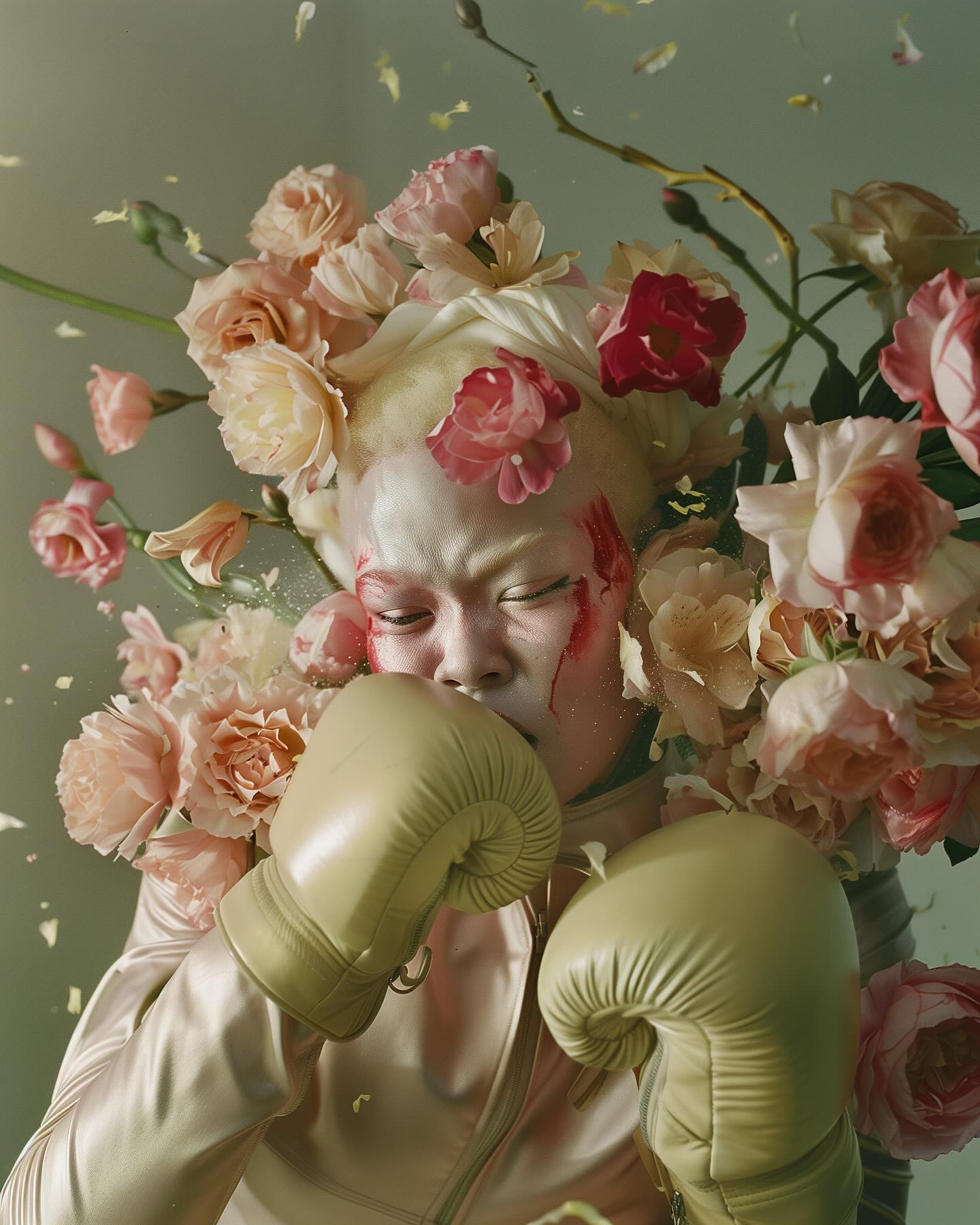
Do you think AI can be creative?
In my opinion, yes. If we deliver a prompt with a very complex description, these tools already prove to be creative, but even when we ask for something in just one word, it manages to deliver something much more complex and rich than we asked for. From my perspective, this is somehow being creative.
Although I’m not comparing this kind of creativity to human creativity. In my opinion, Artificial Intelligence is very capable, with an incredible processing capacity, but at the same time still very literal. With a lack of emotional intelligence, with no critical sense and incapable of understanding irony, sense of humor, anguish, fear, human emotions and capabilities that in the artistic world are the essence of artistic expression.
That’s why I think that for now these tools will always need human creative direction to achieve satisfactory results.

How does delegating creative control to an AI affect your attachment to the result?
Obviously, I have a special affection for graphic design and illustration projects, in which this control is mine from the conception of the idea to the final result. But that doesn’t mean this attachment is affected when I delegate this control to an AI.
I compare this process to a multidisciplinary team in a photographic production, with models, photographers, makeup artists, costume designers and a vast team where I also belong, and have to delegate and trust the skills of other people, so that together we achieve the best possible visual result.
What really interests me is that the end result is what I expected, or even exceeds my expectations.
With these type of tools it’s liberating to be able to materialize so many abstract ideas that only live in our heads, and that would never be shared independently since they require expensive, complex and time-consuming productions.
That’s why I look at these tools as allies, and feel that the final result has a little bit of me.
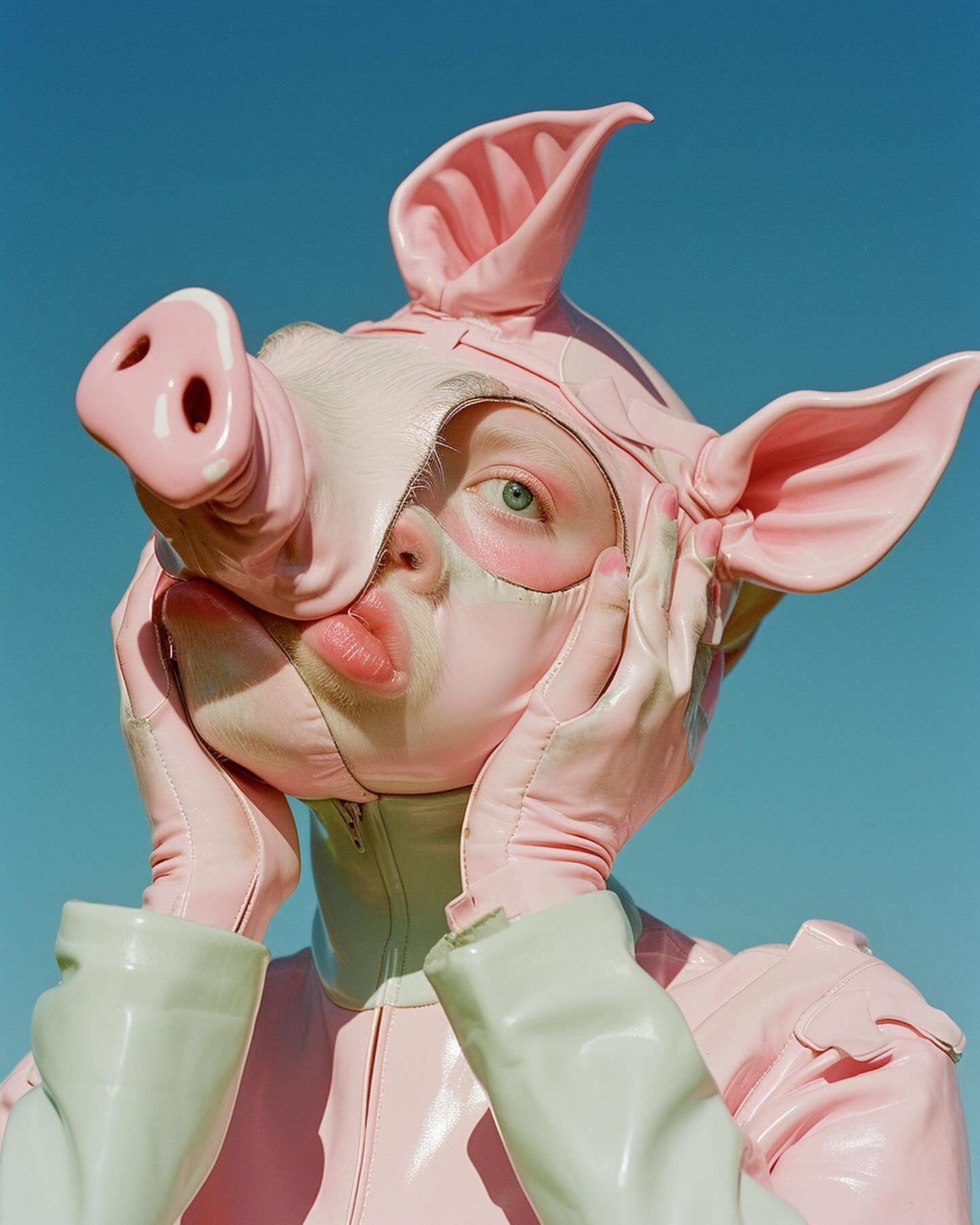
How much can we really steer AI to match our vision? Are we just picking cool stuff it makes?
I’m still in a exploratory phase, like most of us (I believe), but in the contact I have had with Midjourney, which in my opinion has the best graphic response for what I want, sometimes we manage to guide it, other times not as much as we would like.
I think we should look at these tools as just one of many ways to an end. If it’s not working, we can always take the image to Photoshop and bring it closer to what we have in mind. Or we can even request several isolated images from Midjourney and compose them into the same image in Photoshop. We can create a roughest photo-composition and return it as a reference image for Midjourney to work from there. I think all these hybrid processes are part of digital art and are valid for achieving a desired result.
As for the second question, I think that we are picking cool stuff only in an initial phase, when we are testing these tools and understanding what they are capable of delivering to us. From then on we become more demanding and selective and want to intervene and insist more to achieve the closest possible result to our idea and vision.
Can you walk us through your process? How do you art direct AI?
My starting point is a concept or visual idea that I verbalize in a prompt.
With Midjourney’s fast delivery, I have the advantage of adjusting this still abstract image in my head and obtaining immediate visual results, even faster than a simple sketch. And that’s how I look to the first visual responses, like a first draft. From there, I select those results that in my opinion have potential and fine-tune my prompt in each remix. In these prompts I try to give a structured description of what I’m looking for: I describe the style, model, type of photo, framing, surroundings, environment, light, colors – everything that helps the image come closer to what I have in mind. Then the images are taken to Photoshop to correct small flaws and to tune the light and color.
In some images I do photocomposition, mixing 2 or 3 Midjourney images that have the same light and environment conditions.
Other things I like to do:
I’m usually receptive to “failed” results that do not correspond to what was requested, but that somehow have the potential to be developed into other ideas.
Another thing I like to do for fun is come up with a satisfactory result and use it as a reference image in a prompt that is completely contradictory. I have already achieved curious results in this way.
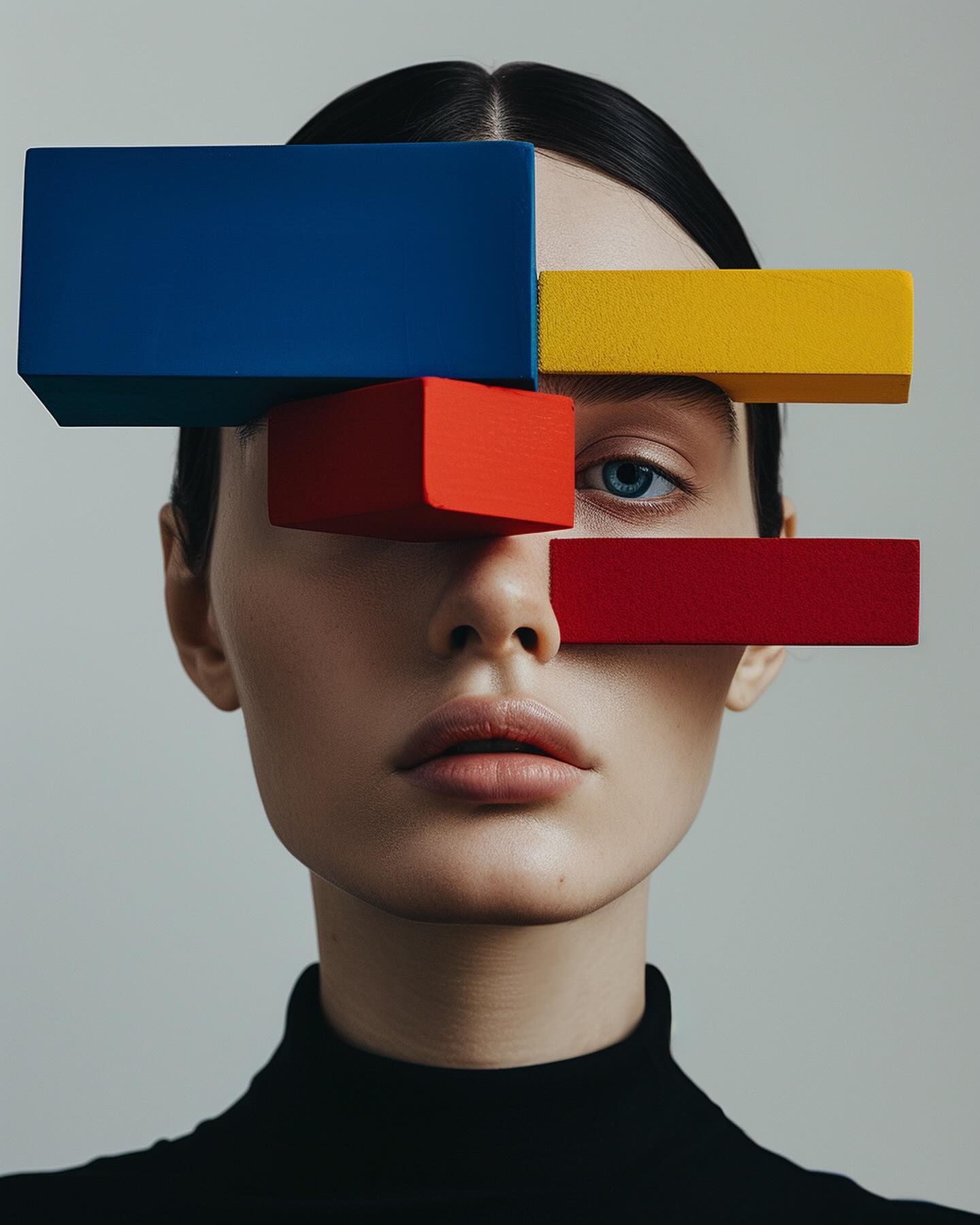
How does your background in art direction and graphic design influence your approach to working with AI in visual arts?
I think that the experience of those who work in this field creates knowledge over the years for a richer and more conscious visual culture, which despite all the subjectivity of this topic, gives us the confidence to distinguish what is visually appealing from what is average, and above all, it makes us more demanding and dissatisfied, making us always try to go further in the search for something new and fresh.
That’s why I believe that the approach of someone who has this background can be different from that of someone who doesn’t, when using this type of tools.

Where do you draw inspiration from for your art direction and AI projects?
Though it may sound cliché, the truth is that I get inspiration from everything that surrounds me, people, locations, artwork, and movies alike. And then, in a subconscious move, these recollections blend together until the day they provide the foundation for my ideas. I find the interpretations to be far more nuanced, remarkable, and lasting.
Things with non-consensual beauty that, in my opinion, provide character and personality despite their flaws and shortcomings are what I find appealing.
In the creative realm, I find inspiration in things that don’t purposefully aim to elicit a specific emotion. For me, things are far more complex, stunning, and memorable when they are more ambiguous, enigmatic, and capable of provoking numerous interpretations.
Have you started using AI in your commercial projects?
Yes. I use it essentially in visual proposals for photographic productions combined with photo-composition in Photoshop.
It is a very effective way of bringing the teams and the client closer to our visual intention without great costs and in very favorable timings.
Once it has been approved by the client, this proposal acts as a reference for the production that we truly want to develop.
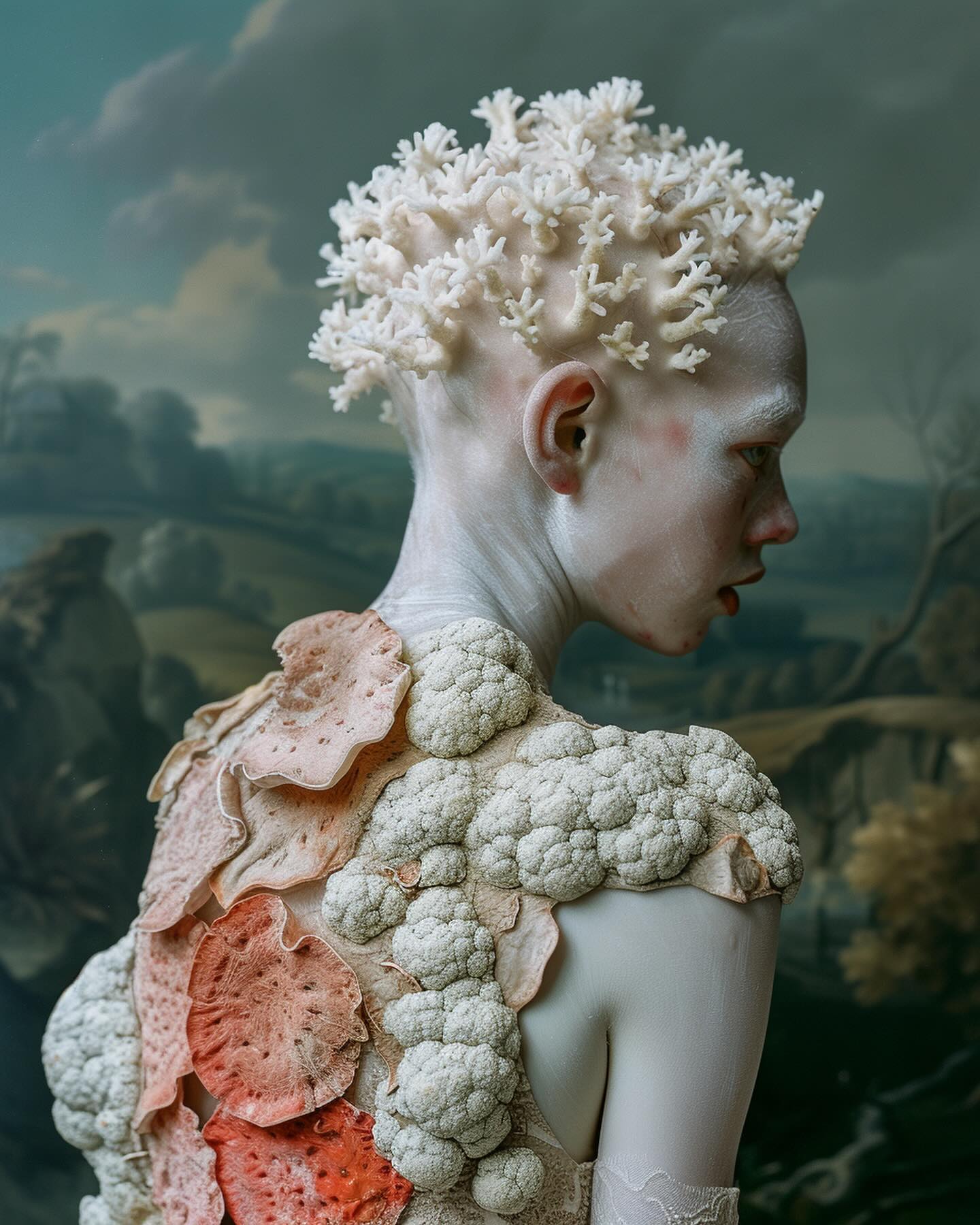
Now that AI is democratizing image and video creation, will anyone be able to be an art director?
In my opinion, the criteria goes beyond the facilitated access for everyone in AI. AI is just another tool that can be used effectively or poorly, despite its capability.
While we are all capable of taking pictures with a gadget with a lens, not everyone is a photographer. The same is true with AI.
We can occasionally produce a decent image with the fewest criteria, but maintaining consistency in the process and producing consistently high-quality outcomes is far more difficult.
In any case, I think that self-taught learning and that having regular access to these resources could produce excellent professionals in these fields.
How do you see graphic and brand design industries affected by AI in the future?
I see them impacted in a positive way. All industries in general, including graphic design, have to adjust to new tools and work methodologies in order to evolve.
The emergence of AI will be responsible for one more of these evolutionary leaps, revolutionizing these industries and causing them to develop exponentially.
As for us designers, it is up to us to reinvent ourselves, with new, even more hybrid approaches, that combine these tools with a wide range of more conventional ones that we were already accustomed to, making production processes even more dynamic and effective.
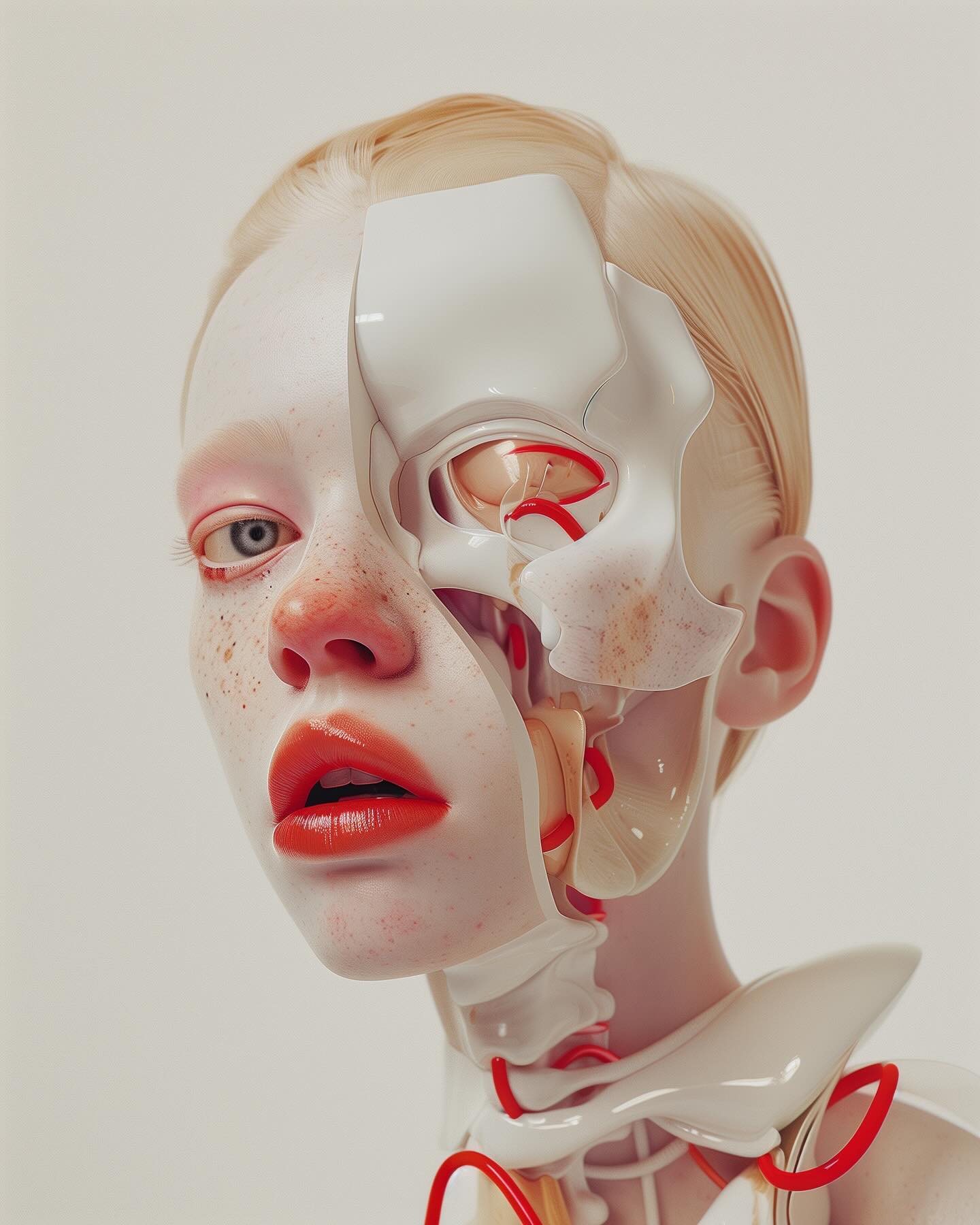
What about illustration?
I think the same applies to illustration. But the best thing about AI is that it’s just another alternative or complement to achieving the desired results. This will depend on each individual’s process.
We can use it with different weights and measures: we can include it actively, or we can use it just as a source of inspiration, or even decide not to use it if we have a more a more unique style.
How do you keep up to date with AI advancements in tools and techniques?
Basically the tool I’ve been using the most is Midjourney. But eventually I do Google searches for the topic, follow some profiles on social networks, and even in the agency itself we often have workshops with updates on this topic.
The Top 3
Top 3 words to describe your AI-generated work
- Weirdly beautiful
- Character-driven
- Ambiguous
Top 3 AI creatives whose work stands out to you
Top 3 improvements you wish to see in current AI tools
- Better UI and UX
- Increased image resolution
- More control over the final output
Top 3 advice for creatives considering starting to experiment with AI
- Explore and experiment a lot
- Be demanding, insistent and selective
- Look for inspiration in small flaws
Heartfelt thanks to Nuno for taking the time to share his insights and experiences with us!
Thank you for reminding us of the pivotal role we creative professionals play in the landscape of AI in art and design, ensuring that our work remains relevant and impactful in a rapidly changing world.
 ☰
☰

